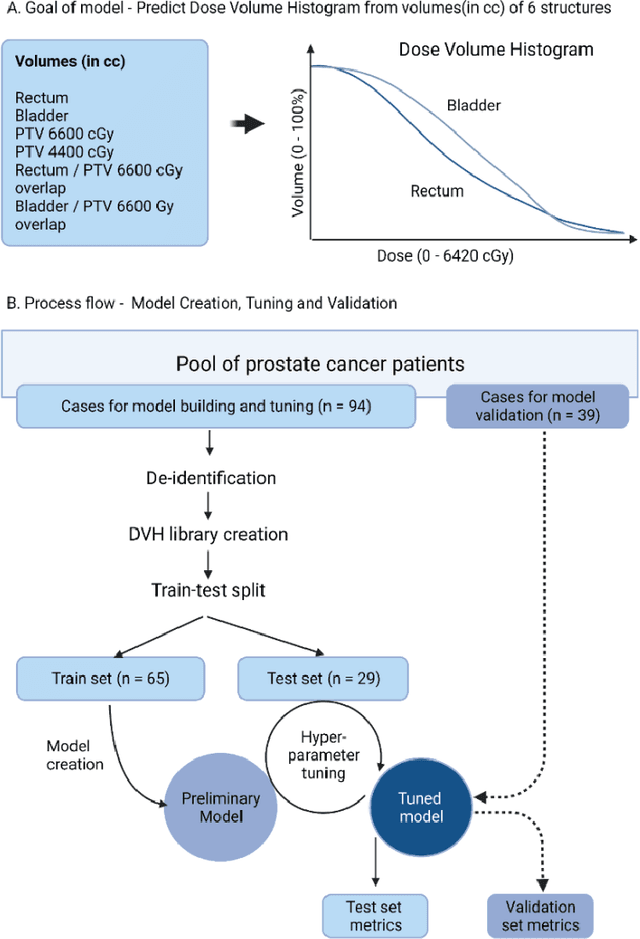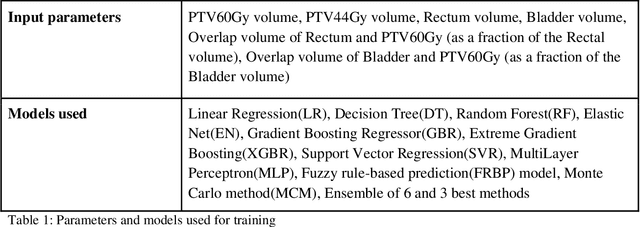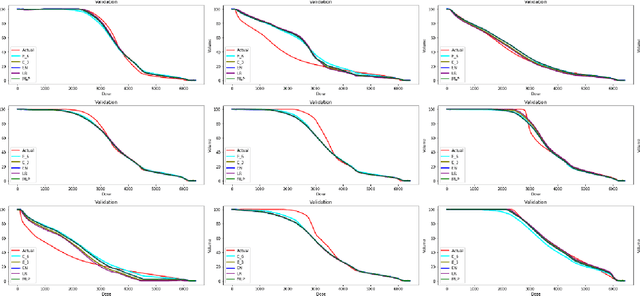Machine learning for prediction of dose-volume histograms of organs-at-risk in prostate cancer from simple structure volume parameters
Paper and Code
Nov 08, 2024



Dose prediction is an area of ongoing research that facilitates radiotherapy planning. Most commercial models utilise imaging data and intense computing resources. This study aimed to predict the dose-volume of rectum and bladder from volumes of target, at-risk structure organs and their overlap regions using machine learning. Dose-volume information of 94 patients with prostate cancer planned for 6000cGy in 20 fractions was exported from the treatment planning system as text files and mined to create a training dataset. Several statistical modelling, machine learning methods, and a new fuzzy rule-based prediction (FRBP) model were explored and validated on an independent dataset of 39 patients. The median absolute error was 2.0%-3.7% for bladder and 1.7-2.4% for rectum in the 4000-6420cGy range. For 5300cGy, 5600cGy and 6000cGy, the median difference was less than 2.5% for rectum and 3.8% for bladder. The FRBP model produced errors of 1.2%, 1.3%, 0.9% and 1.6%, 1.2%, 0.1% for the rectum and bladder respectively at these dose levels. These findings indicate feasibility of obtaining accurate predictions of the clinically important dose-volume parameters for rectum and bladder using just the volumes of these structures.
 Add to Chrome
Add to Chrome Add to Firefox
Add to Firefox Add to Edge
Add to Edge